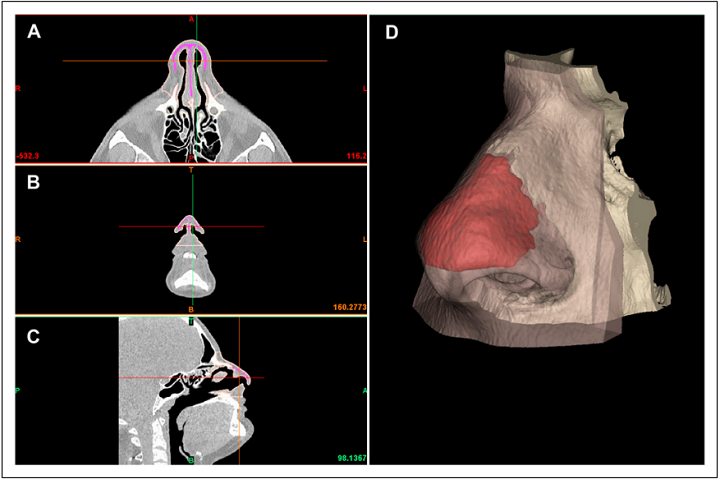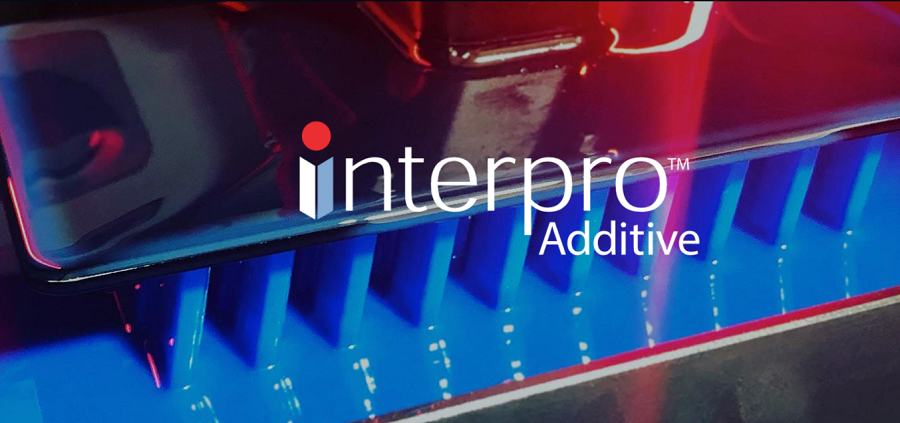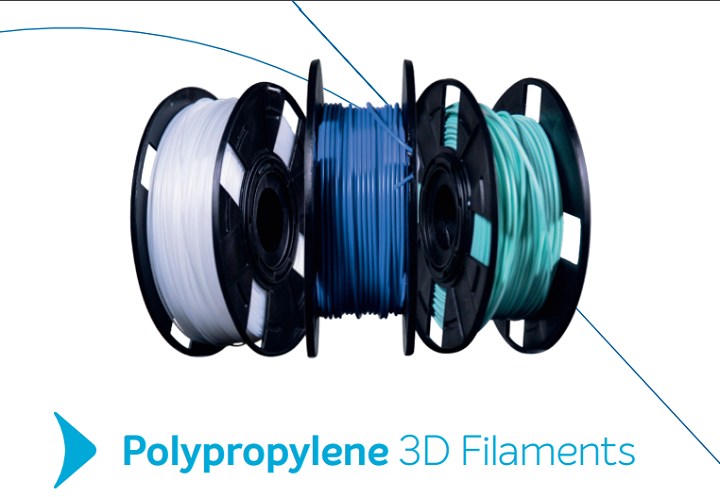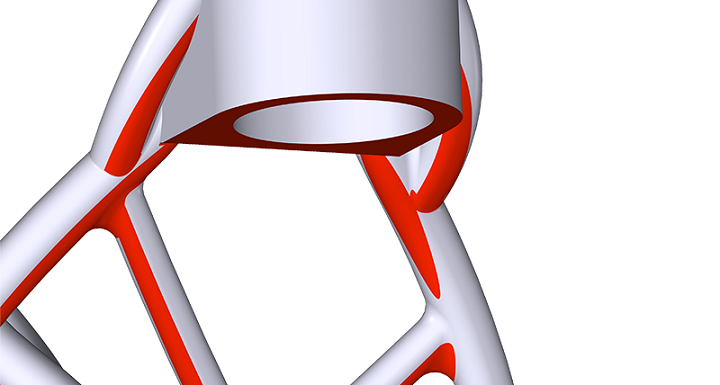We’re starting off with two acquisitions in today’s 3D Printing News Briefs, and then on to a new Amazon e-commerce store for polypropylene filaments. Then we’ll discuss software, print orientation, and finish up with 3D printing for rhinoplasty surgery preparation. Read on for the details!
Titomic Acquires Cold Spray Company Dycomet
Australia-based Titomic (ASX: TTT) announced that it has acquired Dutch company Dycomet Europe B.V., a European leader in cold spray technology. Dycomet offers low, medium, and high pressure cold spray solutions to various industries, including automotive and aviation, which will give local capability and support to Titomic’s European customers. According to a press release, the acquisition will be “immediately revenue accretive for Titomic” with a strong pipeline of European customer orders, giving it a base in Europe, which, paired with its Australian headquarters and Titomic USA, will provide the company with excellent global access. Klaas Rozema, Dycomet’s Founder and CEO, will now serve as General Manager of Titomic Europe.
“The acquisition of Dycomet is a significant step in Titomic’s strategic pathway to being a global company. We are excited to welcome Dycomet onboard and look forward to working with Klaas and his team on the many exciting opportunities that this acquisition presents,” said Herbert Koeck, Titomic’s CEO. “While Titomic focuses on high-pressure applications, Dycomet services the soft-end low and medium-pressure market. With our complementary machinery and product portfolio, the combined expertise now available to the Company will further accelerate the Company’s growth into new markets and provide current customers with a broader product offering.”
TriMech Acquires InterPRO Additive Manufacturing Group
Speaking of acquisitions, TriMech, which provides CAD and engineering software, additive and subtractive manufacturing solutions, and associated training, consulting, and staffing to manufacturers and engineers in North America, is expanding its advanced manufacturing and rapid prototyping offering with the acquisition of InterPRO Additive Manufacturing Group. InterPRO has one of North America’s largest deployments of the new Stratasys Origin P3 system, and also offers in-house technologies including urethane and silicone casting and Multi Jet Fusion, FDM, and large-format SLA printing. With this acquisition, TriMech will add over 70 3D printers to its existing range of 40+ 3D printers at its manufacturing and prototyping facilities in Ontario and Connecticut. Dan Straka, President of InterPRO, will become TriMech’s General Manager of Advanced Manufacturing, and InterPRO will remain in its Connecticut facility under the name TriMech Advanced Manufacturing.
“The pace of change in additive manufacturing continues to accelerate. Advances in plastic and metal printing, speed and workflow, and higher-volume production are changing customer requirements and expectations,” said Marcel Matte, President and CEO of TriMech. “This acquisition brings together more experts and a broader technology offering so we can be the best possible partner to manufacturers of all sizes.”
Braskem, Xenon arc Launch Amazon Store for PP Filaments
Moving on to materials, Braskem, which is the largest producer of polyolefins in the Americas, partnered with Xenon arc to launch its first consumer-facing store on Amazon in order to make polypropylene AM filaments more accessible to consumers. Xenon arc is contributing data-driven marketing and sales platform technologies to help Braskem better reach its small- to mid-sized clients, and the e-commerce marketplace features Braskem’s PP 3D printing filaments in both 1.75 mm and 2.85 mm diameters, which can be used for designing spare parts, rapid prototyping, and custom product design, among other applications, thanks to the material’s impact strength, durability, and chemical resistance. The Amazon store will also sell Braskem’s award-winning carbon fiber reinforced PP filament.
“We are continuously looking for new ways to make our materials more accessible to consumers and small enterprise clients,” said Jason Vagnozzi, Braskem Commercial Director of Additive Manufacturing. “Through our partnership with Xenon arc, we have built a new e-commerce channel that overcomes some of the supply chain complexities that larger commodity producers face when trying to directly reach consumers. Amazon will allow us to better serve smaller makerspaces, hobbyists, and educational institutions that would benefit from our polypropylene innovations.”
Hexagon Adds Additive Build Preparation to ESPRIT CAM Software
Hexagon’s Manufacturing Intelligence division recently added additive build preparation to its ESPRIT CAM software, which will provide digital tools to prepare components for powder bed fusion (PBF) 3D printing in order to streamline hybrid manufacturing workflows and scale up AM production volumes. According to AMPOWER’s Additive Manufacturing Report, PBF represents 86% of the world’s machine install base for additive manufacturing, and with this addition, Hexagon’s ESPRIT CAM software now includes its patented Part-to-Build workflow for both the printing and finishing operations for PBF, including build preparation steps and programming tools for post-processing—offering this dedicated functionality in one piece of software that uses a parametric data-based workflow. Customers can better optimize their AM part designs by using ESPRIT Additive PBF along with other Hexagon products, like Simufact Additive and MSC Apex Generative Design.
“Combining build preparation in the CAM environment is the first step on the journey to true computer-aided manufacturing using additive methods, enabling higher levels of automation and productivity. Our goal is to make the programmer’s life easier, thereby making the shop floor more productive and future-ready to apply the best available machinery and processes to the part in hand,” explained Clement Girard, Product Manager for Additive Manufacturing and Artificial Intelligence at Hexagon.
Thermwood Adds Third Print Orientation to LSAM Systems
In 2020, Thermwood Corp. introduced the Vertical Layer Print (VLP) option to its LSAM (Large Scale Additive Manufacturing) systems, which can print vertical layers; it already offered HLP, or Horizontal Layer Printing. Now the company has added a third print orientation with its new Angle Layer Printing (ALP) option, which can print at a 45° angle. Because each of these orientations has its own advantages, offering all three on the same system, with the complete LSAM print head, makes it an extremely flexible solution.
Currently operating LSAM machines already feature the VLP capability, but for new systems, this has been replaced with a VLP/ALP option. If a customer purchased a machine without VLP, this new VLP/ALP option can be easily added to most of the machines already operating, and supposedly it’s an inexpensive fix as well. LSAM systems, which are said to be the most widely-used large-scale composite thermoplastic 3D printing systems currently in industrial production, are available in a variety of configurations, including full print and trim and print only, in sizes from 5 x 10 feet all the way to 15 x 60 feet.
Using 3D Printed Models for Rhinoplasty Surgery Preparation

Segmentation phase, the multiplanar reconstructions on the axial (A), coronal (B) and sagittal planes (C), in pink the mask imported post-segmentation from MRI. (D), the 3D models of the bone tissue in white, the cartilage structures in red (from MRI/CT co-registration), and the soft tissues of the nasal pyramid in pink (in transparency).
Finally, researchers in Italy published a research paper on their use of CT scans, MRI data, and 3D printing to create pre-surgical models ahead of rhinoplasty surgery, and other surgical reconstruction of cartilaginous structures, which can be pretty challenging. The goal was to come up with an imaging strategy to merge the CT and MRI data in order to 3D print a model that is, as the researchers wrote, “true to the patient’s anatomy.” Ten patients who were candidates for rhinoplasty had CT scans and MRI for characterization of their nasal structures for this study; the bone and soft tissue segmentations took place in the CT, and the MRI captured the cartilage segmentations.
“Subsequently, a 3D model was produced in materials and colors reproducing the density of the three main structures (bone, soft tissue, and cartilage), useful for pre-surgical evaluation,” the researchers wrote. “This study has highlighted that the optimization of a CT and MR dedicated protocol has allowed to reduce the CT radiation dose up to 60% compared to standard acquisitions with the same machine, and MR acquisition time of about 20%. Patient-tailored 3D models and pre-surgical planning have reduced the mean operative time by 20 minutes.”
Subscribe to Our Email Newsletter
Stay up-to-date on all the latest news from the 3D printing industry and receive information and offers from third party vendors.
You May Also Like
Gorilla Sports GE’s First 3D Printed Titanium Cast
How do you help a gorilla with a broken arm? Sounds like the start of a bad joke a zookeeper might tell, but it’s an actual dilemma recently faced by...
Nylon 3D Printed Parts Made More Functional with Coatings & Colors
Parts 3D printed from polyamide (PA, Nylon) 12 using powder bed fusion (PBF) are a mainstay in the additive manufacturing (AM) industry. While post-finishing processes have improved the porosity of...
$25M to Back Sintavia’s Largest Expansion of Metal 3D Printing Capacity Since 2019
Sintavia, the digital manufacturing company specializing in mission-critical parts for strategic sectors, announced a $25 million investment to increase its production capacity, the largest expansion to its operations since 2019....
Velo3D Initiates Public Offering in a Bid to Strengthen Financial Foundations and Drive Future Growth
Velo3D (NYSE: VLD) has been among a number of publicly traded 3D printing firms that have attempted to weather the current macroeconomic climate. After posting a challenging financial report for 2023,...




































